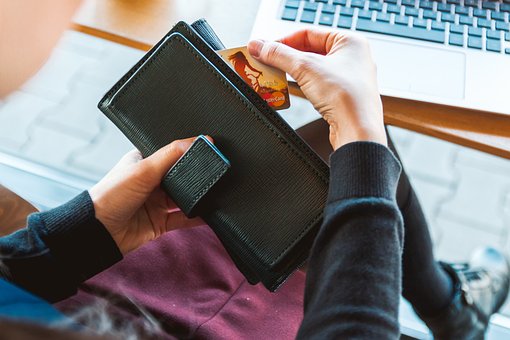With inflation and cost of living on the rise, credit cards can present an attractive method of purchasing items you may need. They’re a convenient way to cover expenses that your bank account can’t handle today. However, debt can rapidly build up, and with interest, can quickly become difficult to manage. These tips for paying down credit card debt can help you regain control over your finances.
Check Your Budget
Do you have a budget? Before you can start building a meaningful way to tackle your debt, you need to first get your monthly finances under control. If you already have a budget, review it to ensure it is still accurate. If you don’t have a budget, start building one.
Start by determining how much money you bring in per month, and how much is spent on bills, food, gas and other expenses. From there, calculate how much money you realistically have each month after setting your budget to start paying down debt. This may require you to set some limits for yourself, like allotting a set amount of money each week for gas, food and other recurring expenses. Once that is done, set a realistic amount each month to pay to reduce debt.
Debt Management Plans
If you are in a position where even the minimum payments on credit cards are difficult to make, a debt management plan can provide credit card debt help. Credit counselors who work to lower your monthly payments to something you can afford usually administer these. You then make one payment to your credit counselor, who pays the rest of your creditors.
Request a Lower Interest Rate
One way to start reducing debt is by preventing it from accruing so quickly. Requesting a lower interest rate can do this. Call your credit card issuer and request a lower interest rate. Many people find success with this, but of course, there’s no guarantee. It’s worth requesting if the worst thing that could happen is they say no.
Consider a Balance Transfer Card
Balance transfer cards are a great way to get control over rampant interest rates. These cards typically offer a 0% introductory APR for a period of time, making them particularly useful if you have one or several high-interest cards. By transferring your balance from a high-interest card, you can pay the balance down without accruing additional interest.
Snowball Method
The snowball method is an easy way to gain momentum while paying off debt. To do this, start by directing your entire budget to pay down debt toward your lowest credit card balance while continuing to pay the minimum payments on the rest of your accounts. When that card is completely paid off, you then start paying the next-lowest balance while paying the minimum toward the rest. By continuing this pattern, you quickly become able to snowball the minimum payments for the accounts paid off into the amount you can pay toward other bills.
Avalanche Method
An alternative to the snowball method is the avalanche method, in which you pay the minimum payments on all of your credit cards, except for the ones with the highest interest rates. All extra money for repaying debt goes to the highest interest account until it is paid off, after which, it is diverted to the second-highest-interest account. This is particularly useful for cutting down the amount paid in interest.
Consider Home Equity
If you own your home and have good credit, you can take out a home equity line of credit, known as a HELOC. Because HELOC loans usually have lower interest rates than credit cards, this does allow you to save money in the long run. However, you’ll need to qualify for this loan and accept that you place your house up as collateral.
Debt doesn’t have to rule your life. These tips for paying down credit card debt can help you bring your financial situation under control. Balance your budget and begin implementing these strategies to start reclaiming your financial health today.

